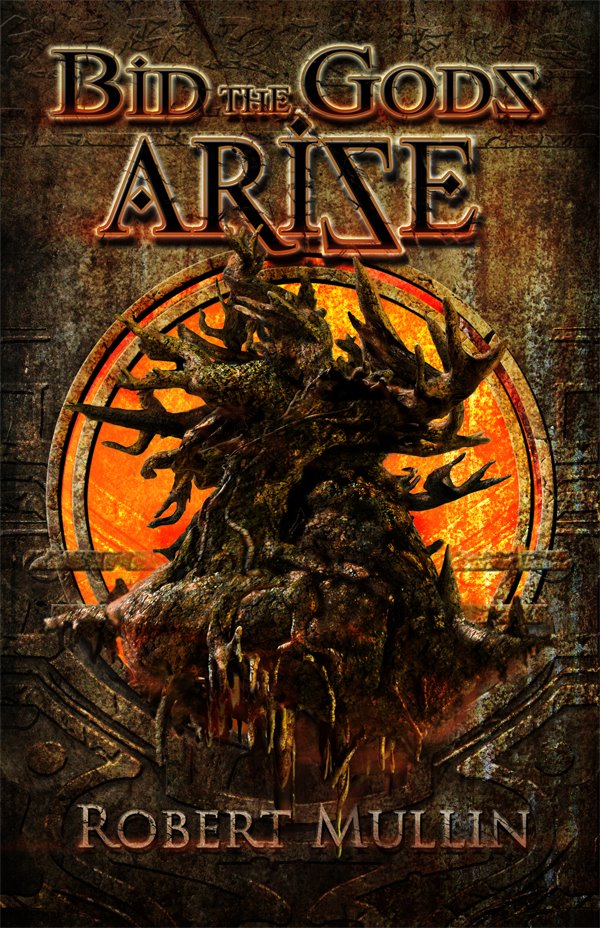
Author:
Ages:
Genres:
BookTags:
Publisher:
Lorehaven may use referral links. As an Amazon Associate, we earn from qualifying purchases.
Bid The Gods Arise
Kidnapped from his homeworld and sold into slavery, Maurin despairs of ever seeing his cousin or his home again.
Robert Mullin · December 2012 ·
for adults, teens + young adults
Kidnapped from his homeworld and sold into slavery, Maurin despairs of ever seeing his cousin or his home again. When he is ransomed by a mysterious woman and reunited with Aric, he joins an unlikely group committed to the downfall of the slave trade. But it isn’t long before he realizes they are being hunted – not only by the blood-lusting head of the slave trade, but by an ancient evil that wants their souls.
Book 1 of the The Wells of the Worlds series.





































I read an ARC of Bid the Gods Arise. When I picked it up, I was kind of “meh”. I don’t really go in for epic fantasy these days. (I’ve been burned too many times by cliche elves with long golden tresses and heroic knights and everything else people can rip off Lord of the Rings or mine from Dungeons and Dragons). All I knew about BTGA was that it had soul-sucking vampires.
It starts with Aric’s dreams and Maurin’s common sense. They live in a temple and are looking at becoming a priest and a prince in an arranged marriage, respectively. Standard fantasy getup.
Roundabout chapter 3, the heroes are kidnapped by an inter-world ship and sold into slavery on a different world. I sat up a little straighter. I hadn’t expected that.
Introduce political scheming involving the illegal slave trade. And people with magic. And a mute faun-girl saved from slavery, whom Maurin falls very hard for. And a female gladiator with a grudge against everything living. And a woman with powers, smarts, and kick-butt fighting skills who trains them all to be a team.
And also that tree. See the gnarly-looking tree on the cover? That’s the size of a mountain, and the home of the Reamar–the soul-eating immortal evil beings who feast on life as their tree devours the planet with its roots. And one of them is calling to Aric through his dreams.
Also, someone in the party is the Dreaded One–the one prophesied to destroy the Reamar. And the Reamar want very much to find and eliminate this person.
There are some Christian elements, but they don’t distract from the story much. Some of the Reamar mythos and the way the world gates work are tied back into a familiar-sounding Creation myth. But there’s only a tiny bit, just enough to make me want to know more. Especially about the world gates and what happens if you go traipsing around the universe (multiverse?).
It’s a great read. The world constantly surprised me, because it wasn’t afraid to throw in airships and technology alongside the standard medieval fare. The characters are well-fleshed out and memorable. (I remembered their names. I never remember character names in fantasy novels.) The ending wraps up the plot threads nicely, but leaves it open for sequels. I await them eagerly!
It sounds like it takes the concept of a sacred tree — the White Tree/Tree of Life/Yggdrasil — and turns it on its head. Interesting.
I think you might be onto something, Bainespal! 🙂
Thanks again, Kessie, for the marvelous review!
Does this book fall into the “Christian” fiction realm? By the reviews I’ve read I’m not real sure. Thank you
So far I’m 40 percent through the book, Kindle edition, and I haven’t hit any Direct Christian bits. Charaters from different factions refer to at least two single deities, along with the titular plural gods that others worship. Who’s the “right” God? I’m not sure yet, though by now the author seems to include a warrior who works for Him.
Slight spoilers here. The novel seems a unique one, with a very early collusion of genres, but that trick isn’t reused or soon built upon (some may prefer this). In the rest I’m finding some vagueness, but enough detail and character growth to keep me going.
Thanks Stephen. I snagged up a copy and am looking forward to reading it.
Quote “Does this book fall into the “Christian” fiction realm? By the reviews I’ve read I’m not real sure. Thank you”
I asked the question earlier and now I’ll answer it. My answer is maybe. To an unbeliever I’d say they would be hard-pressed to see a Biblical element . A Christian however will be able to pick up on some worldviews that match their own. Making theological comparisons would be a stretch but it gives the reader something to think about. There is no bad language and with all the debauchery none of it is gratuitous. Overall I loved the book.
From Steve:
At 94 percent through the novel — it’s a long read! — I would answer yes*.
* Mullin, however, doesn’t opt for the infamous “one to one correspondence”-style allegory. For instance, you might think you have one particular story element pegged. Oh, those are fallen angels. Not necessarily so. So far he hasn’t even gone overboard with the whole “ha ha, I’m subverting your expectations” boast either.
Apparently plenty of people have responded well to the author’s two recent offerings of this as a free e-book. I look forward to writing my own review on Speculative Faith.
(If you want to write your review, Speculative Faith will feature that review just as prominently as we feature regular contributors and guest columns.)